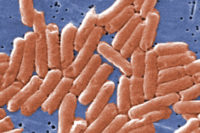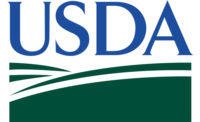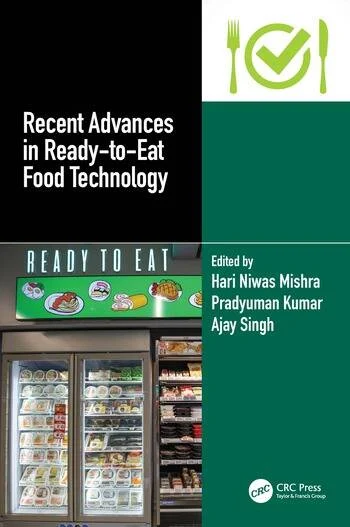TECH FLASH
Federal agencies develop improved method to attribute foodborne illness
A new report says a better understanding of the types of foods that contribute to the problem is necessary.

Salmonella. Source: CDC.
CDC, in collaboration with FDA and USDA’s Food Safety and Inspection Service (FSIS), has developed a new, improved method for analyzing outbreak data to determine which foods are responsible for illnesses related to four major foodborne bacteria.
The report, “Foodborne Illness Source Attribution Estimates for Salmonella, Escherichia coli O157 (E. coli O157), Listeria monocytogenes (Lm) and Campylobacter using Outbreak Surveillance Data,” was released Tuesday and was produced by the Interagency Food Safety Analytics Collaboration (IFSAC)—a partnership of the three agencies that focuses on foodborne illness.
The report states a better understanding of the types of foods that contribute to foodborne illness is necessary to develop effective prevention measures for the problemto be.
“Determining the types of food that cause foodborne illnesses will not only guide efforts to improve food safety, it will also help identify opportunities to influence food safety policy,” the report states. “Regulatory agencies can use source attribution estimates to inform agency priorities, support development of regulations and performance standards and measures, and conduct risk assessments, among other activities.”
The agencies analyzed 1,000 outbreaks that occurred from 1998 to 2012 to assess which categories of foods were most responsible for making people sick with Salmonella, E. coli O157, Listeria and Campylobacter. For the analysis, food was divided into 17 categories.
IFSAC chose these pathogens because of the amount of illnesses they cause as well as the severity. However, IFSAC also says these pathogens were studied because targeted interventions can have a significant impact in reducing them. According to the report, CDC estimates these four pathogens cause 1.9 million cases of foodborne illness in the US each year.
The full report presents the methods behind the results and provides details about the amount of uncertainty around the estimates.
Some findings include:
- More than 80 percent of E. coli O157 illnesses were attributed to beef and vegetable row crops such as leafy vegetables.
- Salmonella illnesses were broadly attributed across food commodities, with 77 percent of illnesses related to seeded vegetables (such as tomatoes), eggs, fruits, chicken, beef, sprouts and pork.
- Nearly 75 percent of Campylobacter illnesses were attributed to dairy (66 percent) and chicken (8 percent). Most of the dairy outbreaks were related to raw milk or cheese produced from raw milk such as unpasteurized queso fresco.
- More than 80 percent of Listeria illnesses were attributed to fruit (50 percent) and dairy (31 percent). Data was sparse for Listeria, and the estimate for fruit reflects the impact of a single large outbreak linked to cantaloupes in 2011.
Due to limitations in outbreak data and uncertainty in the estimates, IFSAC recommends caution in interpreting certain findings such as the estimates for Campylobacter in dairy and Listeria in fruits. IFSAC suggests the results be used with other scientific data for risk-based decision-making.
The full report can be found here.
Looking for a reprint of this article?
From high-res PDFs to custom plaques, order your copy today!









